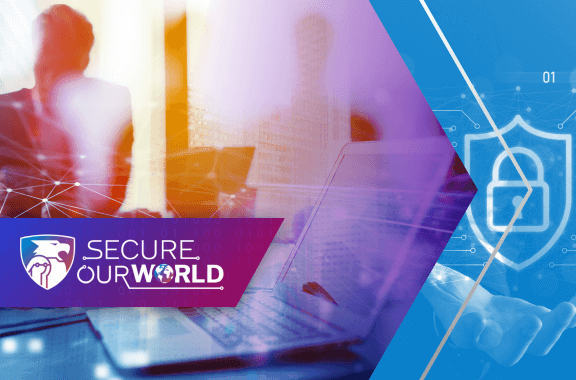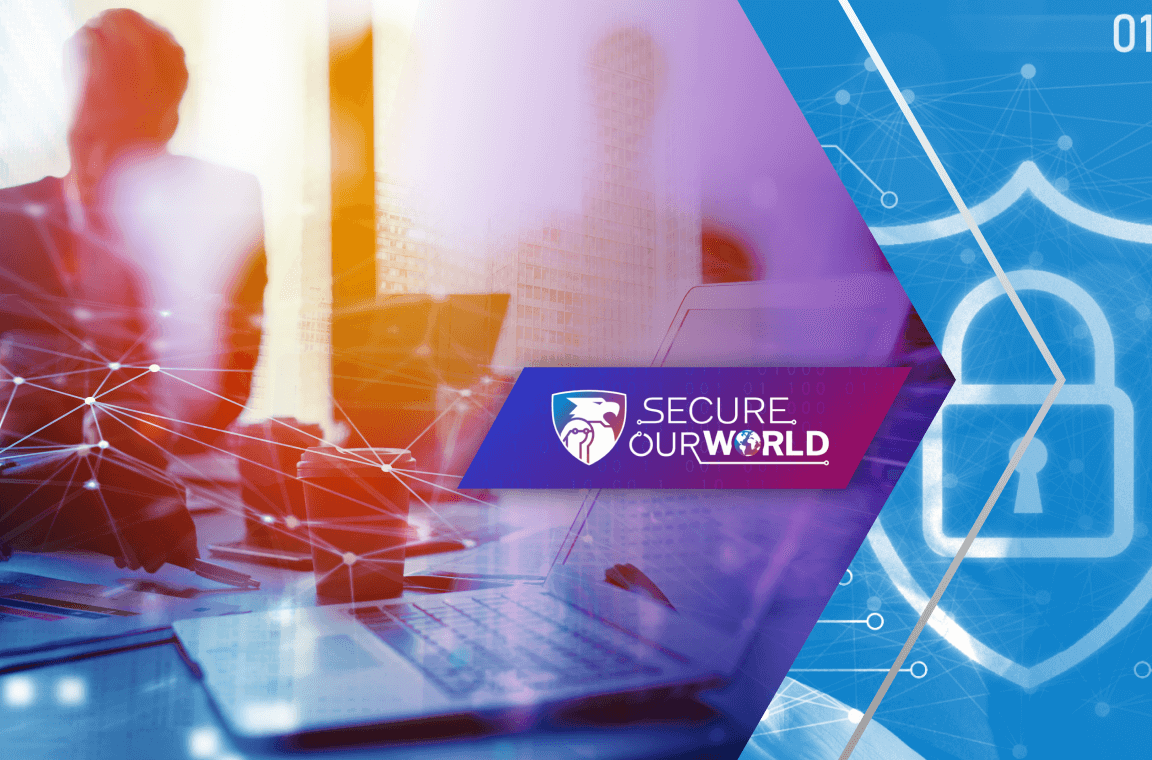Every October since 2004, Cybersecurity Awareness Month has generated security awareness for everyday internet users and businesses. But, far from simply being a month of reminders about security best practices of digital users, it’s a chance for CXOs to reflect on and recalibrate their organization’s security posture. Technology leaders should pause and take stock of what's working and what's not and how they can refocus their organization on nailing cybersecurity fundamentals and best practices.
More than just an anniversary
Now in its twentieth year, Cybersecurity Awareness Month has been bolstered by the U.S. Cybersecurity and Infrastructure Security Agency’s (CISA’s) introduction of its “Secure Our World” program. Don’t think of it as a catchphrase or a seasonal initiative. It's a bold statement of intent. It's about fostering a forward-thinking, security-first culture integral to the digital DNA of individuals, families, and businesses. The program recognizes that real change starts from within and that businesses and everyday users have their part to play in securing our world.
Establish a new cybersecurity ethos
So, how can CXOs make the most of this annual occasion? First, make it more than a trigger for a PR blitz; it's a moment for introspection, strategic evaluation, and out-of-the-box ideas. As technology progresses, we must confront a sobering reality: many cyber breaches stem from human oversights. It isn't about assigning blame. It’s about recognizing the inherent challenges of navigating a constantly shifting digital landscape.
For CXOs and other technology leaders, here's a distilled roadmap that can drastically improve or touch up a cybersecurity program:
- User training and awareness: Educate employees about the various forms of social engineering attacks and the importance of vigilance. Regular training programs are vital for strengthening the human element of cybersecurity.
- Harnessing AI and automation: Integrate AI-driven tools to identify and respond to potential threats faster and more accurately than humans. Machine learning can analyze patterns, detect anomalies, and learn about the characteristics of evolving threats.
- Password management: Encourage strong, unique passwords and implement MFA to reduce the risks associated with password-related breaches.
- Regular software updates and patch management: Keeping systems and software up to date is a fundamental defense against vulnerabilities that attackers can exploit.
- Incident response plans: Develop and regularly test incident response plans to minimize the damage when a breach occurs, ensuring a swift and coordinated reaction.
- Data encryption: Encrypt sensitive data at rest and in transit to thwart potential attackers from quickly accessing valuable and sensitive information.
- Third-party risk assessment: Assess the cybersecurity measures of third-party vendors and partners accessing your data, as they can be potential weak links.
- Compliance with regulations: Ensure compliance with industry-specific and government regulations and standards, as these often provide valuable guidelines for cybersecurity best practices.
- Continuous monitoring: Implement ongoing monitoring and analysis of network traffic, user behavior, and system logs to detect and respond to threats in real time.
- Zero trust architecture: When you’re over incremental steps and ready for revolutionary change, consider migrating from the traditional perimeter security model and adopting a zero trust approach driven by the concept “never trust, always verify.” You can minimize the risks associated with human discretion in granting access and other security and connectivity benefits.
Guidance for every user: CISA's four pillars of online safety
As a CXO, your responsibility extends beyond crafting top-level security strategies and helping CISA and other public-sector organizations elucidate security standards broadly. How else will we share responsibility and protect the interfaces between public and private infrastructure?
CISA’s “Four Easy Ways to Stay Safe Online” is a concise, easy-to-follow playbook that every CXO should share with their organization to create a company-wide security culture that imparts good practices for employees outside of work. It provides a foundation for fostering a safer digital environment and empowering greater security awareness among users:
- Use strong passwords: A strong password is a fortress. It should be a mix of uppercase, lowercase, numerics, and symbols, making it formidable, if not impenetrable. While crafting such a password may seem challenging, users can leverage password managers to shoulder that burden and create robust passwords for all accounts.
- Turn on multi-factor authentication (MFA): Strong passwords alone can't bear the brunt of cyber threats. MFA acts as an additional checkpoint, making unauthorized access substantially more challenging. Ensure your security team prioritizes activating MFA on crucial accounts like emails, social platforms, and financial portals.
- Recognize and report phishing: Phishing often arrives in unsolicited messages, luring you to divulge sensitive details or click on suspicious links. Be sure to advise your users to be discerning, trust their instincts, and block, delete, and report suspicious messages when in doubt.
- Update software: Keeping software updated isn't just about accessing new features; it's about fortifying digital defenses. Each update patches vulnerabilities, making devices less susceptible to attacks. If auto-updates aren’t an option, adopt a routine to manually verify and update regularly.
The path ahead
For CXOs, Cybersecurity Awareness Month isn't just a date on the calendar. It's a compass pointing us in a safer direction. As we journey through the evolving terrains of cyberspace, this month serves as a timely reminder of our responsibilities and opportunities. By embracing initiatives like “Secure Our World” and instilling a culture of continuous learning and proactive defense, we are safeguarding our interests and crafting a resilient and secure digital legacy for future generations.
What to read next:
Top 10 CXO articles to help build cybersecurity awareness


